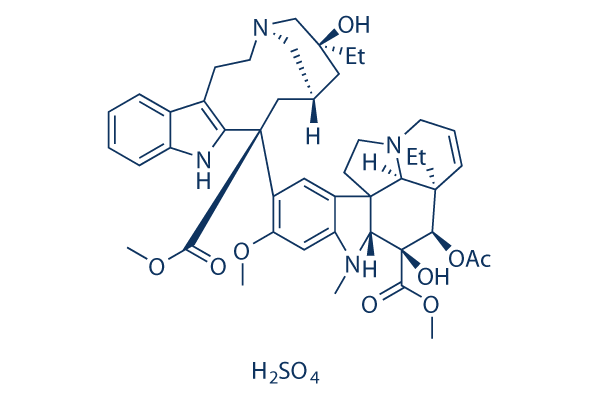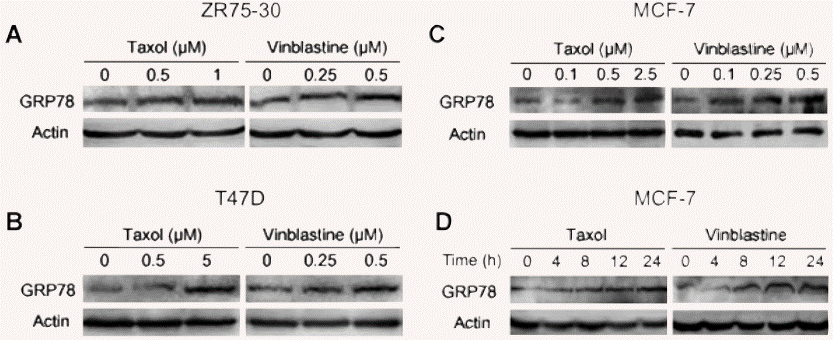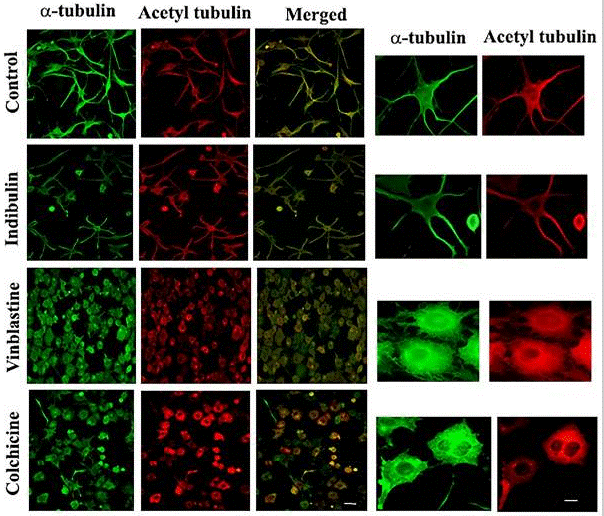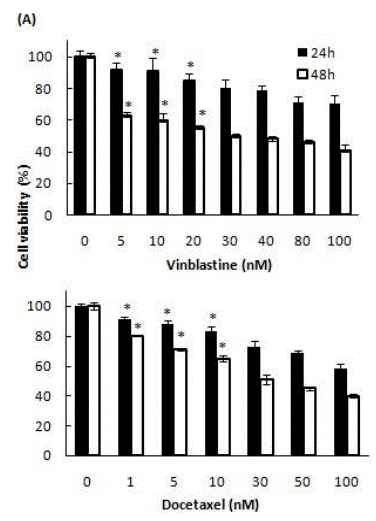
- Inhibitors
- By product type
- Natural Products
- Inducing Agents
- Peptides
- Antibiotics
- Antibody-drug Conjugates(ADC)
- PROTAC
- Hydrotropic Agents
- Dyes
- By Signaling Pathways
- PI3K/Akt/mTOR
- Epigenetics
- Methylation
- Immunology & Inflammation
- Protein Tyrosine Kinase
- Angiogenesis
- Apoptosis
- Autophagy
By research - Antibodies
- Compound Libraries
- Popular Compound Libraries
- Customize Library
- Clinical and FDA-approved Related
- Bioactive Compound Libraries
- Inhibitor Related
- Natural Product Related
- Metabolism Related
- Cell Death Related
- By Signaling Pathway
- By Disease
- Anti-infection and Antiviral Related
- Neuronal and Immunology Related
- Fragment and Covalent Related
- FDA-approved Drug Library
- FDA-approved & Passed Phase I Drug Library
- Preclinical/Clinical Compound Library
- Bioactive Compound Library-I
- Bioactive Compound Library-Ⅱ
- Kinase Inhibitor Library
- Express-Pick Library
- Natural Product Library
- Human Endogenous Metabolite Compound Library
- Alkaloid Compound LibraryNew
- Angiogenesis Related compound Library
- Anti-Aging Compound Library
- Anti-alzheimer Disease Compound Library
- Antibiotics compound Library
- Anti-cancer Compound Library
- Anti-cancer Compound Library-Ⅱ
- Anti-cancer Metabolism Compound Library
- Anti-Cardiovascular Disease Compound Library
- Anti-diabetic Compound Library
- Anti-infection Compound Library
- Antioxidant Compound Library
- Anti-parasitic Compound Library
- Antiviral Compound Library
- Apoptosis Compound Library
- Autophagy Compound Library
- Calcium Channel Blocker LibraryNew
- Cambridge Cancer Compound Library
- Carbohydrate Metabolism Compound LibraryNew
- Cell Cycle compound library
- CNS-Penetrant Compound Library
- Covalent Inhibitor Library
- Cytokine Inhibitor LibraryNew
- Cytoskeletal Signaling Pathway Compound Library
- DNA Damage/DNA Repair compound Library
- Drug-like Compound Library
- Endoplasmic Reticulum Stress Compound Library
- Epigenetics Compound Library
- Exosome Secretion Related Compound LibraryNew
- FDA-approved Anticancer Drug LibraryNew
- Ferroptosis Compound Library
- Flavonoid Compound Library
- Fragment Library
- Glutamine Metabolism Compound Library
- Glycolysis Compound Library
- GPCR Compound Library
- Gut Microbial Metabolite Library
- HIF-1 Signaling Pathway Compound Library
- Highly Selective Inhibitor Library
- Histone modification compound library
- HTS Library for Drug Discovery
- Human Hormone Related Compound LibraryNew
- Human Transcription Factor Compound LibraryNew
- Immunology/Inflammation Compound Library
- Inhibitor Library
- Ion Channel Ligand Library
- JAK/STAT compound library
- Lipid Metabolism Compound LibraryNew
- Macrocyclic Compound Library
- MAPK Inhibitor Library
- Medicine Food Homology Compound Library
- Metabolism Compound Library
- Methylation Compound Library
- Mouse Metabolite Compound LibraryNew
- Natural Organic Compound Library
- Neuronal Signaling Compound Library
- NF-κB Signaling Compound Library
- Nucleoside Analogue Library
- Obesity Compound Library
- Oxidative Stress Compound LibraryNew
- Plant Extract Library
- Phenotypic Screening Library
- PI3K/Akt Inhibitor Library
- Protease Inhibitor Library
- Protein-protein Interaction Inhibitor Library
- Pyroptosis Compound Library
- Small Molecule Immuno-Oncology Compound Library
- Mitochondria-Targeted Compound LibraryNew
- Stem Cell Differentiation Compound LibraryNew
- Stem Cell Signaling Compound Library
- Natural Phenol Compound LibraryNew
- Natural Terpenoid Compound LibraryNew
- TGF-beta/Smad compound library
- Traditional Chinese Medicine Library
- Tyrosine Kinase Inhibitor Library
- Ubiquitination Compound Library
-
Cherry Picking
You can personalize your library with chemicals from within Selleck's inventory. Build the right library for your research endeavors by choosing from compounds in all of our available libraries.
Please contact us at info@selleckchem.com to customize your library.
You could select:
- Bioreagents
- qPCR
- 2x SYBR Green qPCR Master Mix
- 2x SYBR Green qPCR Master Mix(Low ROX)
- 2x SYBR Green qPCR Master Mix(High ROX)
- Protein Assay
- Protein A/G Magnetic Beads for IP
- Anti-Flag magnetic beads
- Anti-Flag Affinity Gel
- Anti-Myc magnetic beads
- Anti-HA magnetic beads
- Poly DYKDDDDK Tag Peptide lyophilized powder
- Protease Inhibitor Cocktail
- Protease Inhibitor Cocktail (EDTA-Free, 100X in DMSO)
- Phosphatase Inhibitor Cocktail (2 Tubes, 100X)
- Cell Biology
- Cell Counting Kit-8 (CCK-8)
- Animal Experiment
- Mouse Direct PCR Kit (For Genotyping)
- Featured Products
- MRTX1133
- Nab-Paclitaxel
- KP-457
- IAG933
- RMC-6236 (Daraxonrasib)
- RMC-7977
- Zoldonrasib (RMC-9805)
- GsMTx4
- Navitoclax (ABT-263)
- TSA (Trichostatin A)
- Y-27632 Dihydrochloride
- SB431542
- SB202190
- MK-2206 Dihydrochloride
- LY294002
- Alisertib (MLN8237)
- XAV-939
- CHIR-99021 (Laduviglusib)
- Bafilomycin A1 (Baf-A1)
- Thiazovivin (TZV)
- CP-673451
- Verteporfin
- DAPT
- Galunisertib (LY2157299)
- MG132
- SBE-β-CD
- Tween 80
- Bavdegalutamide (ARV-110)
- Z-VAD-FMK
- Wnt-C59 (C59)
- IWR-1-endo
- (+)-JQ1
- 3-Deazaneplanocin A (DZNep) Hydrochloride
- RepSox (E-616452)
- Erastin
- Q-VD-Oph
- Puromycin Dihydrochloride
- Cycloheximide
- Telaglenastat (CB-839)
- A-83-01
- Ceralasertib (AZD6738)
- Liproxstatin-1
- Emricasan (IDN-6556)
- PMA (Phorbol 12-myristate 13-acetate)
- Dibutyryl cAMP (Bucladesine) sodium
- Nedisertib (M3814)
- PLX5622
- IKE (Imidazole Ketone Erastin)
- STM2457
- Saruparib (AZD5305)
- New Products
- Contact Us
research use only
Vinblastine sulfate Antineoplastic and Immunosuppressive Antibiotics inhibitor
Cat.No.S4505

Chemical Structure
Molecular Weight: 909.05
Quality Control
Batch:
Purity:
99.91%
99.91
Cell Culture, Treatment & Working Concentration
| Cell Lines | Assay Type | Concentration | Incubation Time | Formulation | Activity Description | PMID |
|---|---|---|---|---|---|---|
| COLO 320 human colorectal carcinoma cell line | Function assay | In vitro concentration required to kill 50% of COLO 320 human colorectal carcinoma cell line, EC50=0.08 μM | ||||
| LNCaP human prostate cancer cell line | Function assay | In vitro concentration required to kill 50% of LNCaP human prostate cancer cell line, EC50=0.5 μM | ||||
| K562 cell | Growth inhibition assay | In vitro inhibitory concentration against human chronic myelogenous leukemia K562 cell growth, IC50=0.001 μM | ||||
| T47D cells | Function assay | In vitro concentration required to kill 50% of T47D human breast ductal carcinoma cell line, EC50=0.08 μM | ||||
| K562 cell | Proliferation assay | 48 h | Antiproliferative activity against human K562 cells after 48 hrs, IC50=0.001 μM | |||
| ACHN cells | Cytotoxicity assay | 48 h | Cytotoxicity against human ACHN cells after 48 hrs by SRB assay, IC50=22.7 μM | |||
| A375 cells | Cytotoxicity assay | 48 h | Cytotoxicity against human A375 cells after 48 hrs by SRB assay, IC50=7.2 μM | |||
| C32 cells | Cytotoxicity assay | 48 h | Cytotoxicity against human C32 cells after 48 hrs by SRB assay, IC50=3 μM | |||
| LNCAP cells | Cytotoxicity assay | 48 h | Cytotoxicity against human LNCAP cells after 48 hrs by SRB assay, IC50=29.3 μM | |||
| Huh-7D12 cells | Cytotoxicity assay | 48 h | Cytotoxicity against human Huh-7D12 cells after 48 hrs by SRB assay, IC50=45.6 μM | |||
| COR-L23 cells | Cytotoxicity assay | 48 h | Cytotoxicity against human COR-L23 cells after 48 hrs by SRB assay, IC50=45.5 μM | |||
| 142BR cells | Cytotoxicity assay | 48 h | Cytotoxicity against human 142BR cells after 48 hrs by SRB assay, IC50=37.6 μM | |||
| HT-29 cells | Cytotoxicity assay | 48 h | Cytotoxicity against human HT-29 cells after 48 hrs by MTS assay, IC50=0.55 μM | |||
| A549 cells | Proliferation assay | 48 h | Antiproliferative activity against human A549 cells after 48 hrs by MTS assay, IC50=2.36 μM | |||
| DU145 cells | Proliferation assay | 48 h | Antiproliferative activity against human DU145 cells after 48 hrs by MTS assay, IC50=4.25 μM | |||
| SK-MEL-5 cells | Proliferation assay | 48 h | Antiproliferative activity against human SK-MEL-5 cells after 48 hrs by MTS assay, IC50=1.74 μM | |||
| HepG2 cells | Proliferation assay | 48 h | Antiproliferative activity against human HepG2 cells after 48 hrs by MTS assay, IC50=0.16 μM | |||
| HT-29 cells | Proliferation assay | 48 h | Antiproliferative activity against human HT-29 cells after 48 hrs by MTS assay, IC50=11.18 μM | |||
| MCF7 cells | Proliferation assay | 48 h | Antiproliferative activity against human MCF7 cells after 48 hrs by MTS assay, IC50=24.08 μM | |||
| MDA-MB-231 cells | Proliferation assay | 48 h | Antiproliferative activity against human MDA-MB-231 cells after 48 hrs by MTS assay, IC50=31.52 μM | |||
| rat REF52 cells | Function assay | 0.1 μM | 30 mins | Induction of microtubule depolymerization in rat REF52 cells at 0.1 uM after 30 mins by fluorescence assay | ||
| HepG2 cells | Cytotoxicity assay | 72 h | Cytotoxicity against adriamycin-resistant human HepG2 cells assessed as growth inhibition after 72 hrs by MTT assay, IC50=0.056 μM | |||
| HepG2 cells | Cytotoxicity assay | 72 h | Cytotoxicity against human HepG2 cells assessed as growth inhibition after 72 hrs by MTT assay, IC50=0.019 μM | |||
| K562 cells | Cytotoxicity assay | 72 h | Cytotoxicity against human K562 cells assessed as growth inhibition after 72 hrs by MTT assay, IC50=0.016 μM | |||
| MDA-MB-231 cells | Cytotoxicity assay | 72 h | Cytotoxicity against human MDA-MB-231 cells assessed as growth inhibition after 72 hrs by MTT assay, IC50=0.0083 μM | |||
| MCF7 cells | Cytotoxicity assay | 72 h | Cytotoxicity against human MCF7 cells assessed as growth inhibition after 72 hrs by MTT assay, IC50=0.007 μM | |||
| SCL6 cells | Cytotoxicity assay | Cytotoxicity against human SCL6 cells by MTT assay, ED50=6.1 Μm | ||||
| SCL9 | Cytotoxicity assay | Cytotoxicity against human SCL9 cells by MTT assay, ED=5.3 μM | ||||
| KATO III cells | Cytotoxicity assay | Cytotoxicity against human KATO III cells by MTT assay, ED50=6.1 μM | ||||
| NUGC4 cells | Cytotoxicity assay | Cytotoxicity against human NUGC4 cells by MTT assay, ED50=5.3 μM | ||||
| UACC903 cells | Cytotoxicity assay | 48 h | Cytotoxicity against human UACC903 cells after 48 hrs by MTS assay, IC50=1.65 μM | |||
| K562 cells | Function assay | Inhibition of tubulin polymerization in human K562 cells, IC50=0.13 μM | ||||
| BxPC3 cells | Proliferation assay | 48 h | Antiproliferative activity against human BxPC3 cells after 48 hrs by MTS assay, IC50=1.13 μM | |||
| Click to View More Cell Line Experimental Data | ||||||
Chemical Information, Storage & Stability
| Molecular Weight | 909.05 | Formula | C46H58N4O9.H2SO4 |
Storage (From the date of receipt) | |
|---|---|---|---|---|---|
| CAS No. | 143-67-9 | Download SDF | Storage of Stock Solutions |
|
|
| Synonyms | NSC-49842, Vincaleukoblastine, 29060-LE | Smiles | CCC1(CC2CC(C3=C(CCN(C2)C1)C4=CC=CC=C4N3)(C5=C(C=C6C(=C5)C78CCN9C7C(C=CC9)(C(C(C8N6C)(C(=O)OC)O)OC(=O)C)CC)OC)C(=O)OC)O.OS(=O)(=O)O | ||
Solubility
|
In vitro |
DMSO
: 100 mg/mL
(110.0 mM)
Water : 50 mg/mL Ethanol : Insoluble |
Molarity Calculator
|
In vivo |
|||||
In vivo Formulation Calculator (Clear solution)
Step 1: Enter information below (Recommended: An additional animal making an allowance for loss during the experiment)
mg/kg
g
μL
Step 2: Enter the in vivo formulation (This is only the calculator, not formulation. Please contact us first if there is no in vivo formulation at the solubility Section.)
%
DMSO
%
%
Tween 80
%
ddH2O
%
DMSO
+
%
Calculation results:
Working concentration: mg/ml;
Method for preparing DMSO master liquid: mg drug pre-dissolved in μL DMSO ( Master liquid concentration mg/mL, Please contact us first if the concentration exceeds the DMSO solubility of the batch of drug. )
Method for preparing in vivo formulation: Take μL DMSO master liquid, next addμL PEG300, mix and clarify, next addμL Tween 80, mix and clarify, next add μL ddH2O, mix and clarify.
Method for preparing in vivo formulation: Take μL DMSO master liquid, next add μL Corn oil, mix and clarify.
Note: 1. Please make sure the liquid is clear before adding the next solvent.
2. Be sure to add the solvent(s) in order. You must ensure that the solution obtained, in the previous addition, is a clear solution before proceeding to add the next solvent. Physical methods such
as vortex, ultrasound or hot water bath can be used to aid dissolving.
Mechanism of Action
| Targets/IC50/Ki |
nAChR [1]
(Adrenal Chromaffin Cells) 8.9 μM
|
|---|---|
| In vitro |
The average terminal half-lives of Vinblastine sulfate is 14.3 h. When incubated in freshly isolated rat hepatocytes, this compound penetrates rapidly and intensely into the cells, probably through a passive diffusion mechanism followed by tight cellular binding[3]. It inhibits the angiogenic response induced by adrenomedullin and is also positive for mitotic slippage, causing micronuclei in mononucleate cells with cytokinesis block[4]. This chemical gives significant increase in micronucleated mononucleated cells at concentrations that produced approximately 50% cell death and cytostasis or less as calculated using RPD, RICC and RCC[2].
|
| In vivo |
Vinblastine is a widely used anticancer drug with undesired side effects [6]. A combination of this compound and RAP at very low doses against human HCC gets a satisfactory antiangiogenic effect in vivo[4]. The clinically relevant dose of this chemical inhibits palmitoylation of tubulin in vivo in CEM cells (effect on depalmitoylation of tubulin)[5].
|
References |
|
Applications
| Methods | Biomarkers | Images | PMID |
|---|---|---|---|
| Western blot | GRP78 p-eIF2 p-JNK / c-Caspase-7 / c-PARP ERK / p-ERK / Mcl-1 / Bad / Bid / Noxa |

|
19674193 |
| Immunofluorescence | α-tubulin / Acetyl tubulin |

|
30120268 |
| Growth inhibition assay | Cell viability |

|
27114800 |
Clinical Trial Information
(data from https://clinicaltrials.gov, updated on 2024-05-22)
| NCT Number | Recruitment | Conditions | Sponsor/Collaborators | Start Date | Phases |
|---|---|---|---|---|---|
| NCT06381570 | Recruiting | Low-grade Glioma |
Daniel Morgenstern|The Hospital for Sick Children |
March 21 2024 | Early Phase 1 |
Tech Support
Tel: +1-832-582-8158 Ext:3
If you have any other enquiries, please leave a message.






































